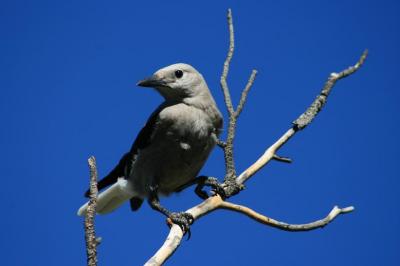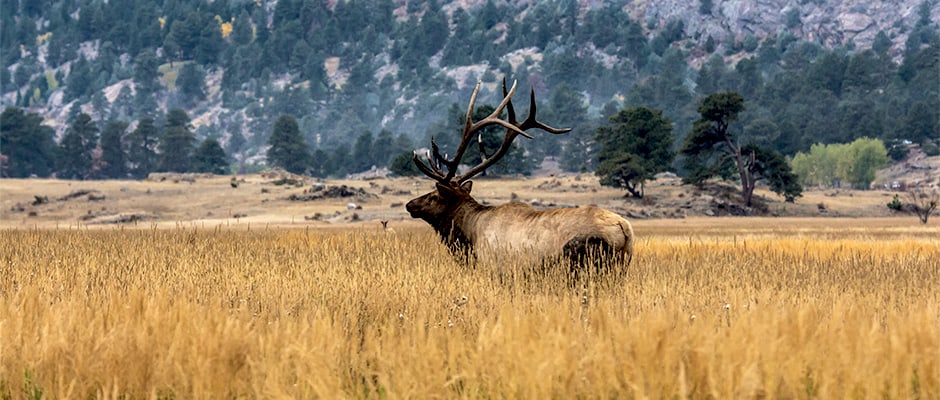Share this article
Game not always umbrella species for conservation
Conserving game species may not always provide trickle-down benefits for all species in ecosystems, according to new research.
Sometimes, the effects of sustaining high numbers of these ungulates can cause mixed consequences, however more studies are needed on whether game species conservation helps nongame species before definitive conclusions can be made.

A Clark’s nutcracker in the Piceance Basin in Northwest Colorado. ©Aaron Campbell
“There’s this notion that habitat management that’s good for game species is good for all wildlife,” said Travis Gallo in a press release. Gallo is a Ph.D. student in the Department of Fish, Wildlife and Conservation Biology at Colorado State University and lead author of a study published recently in Biological Conservation. “There’s a lot of money that goes into habitat management for game species, and we wanted to see if there were any synergies between game management and conservation of species that were not the target of management actions.”
Gallo and Liba Pejchar, study co-author and assistant professor at Colorado State University, reviewed published papers and were surprised to find that there were very few studies that looked at the effects of managing game on ecosystems.
“We found only 26 studies that measured the direct and indirect effects of game management efforts on nongame animals,” Gallo said.
Among these studies were cases where game species management led to positive and negative effects among nongame species. A study on sage grouse management in the western U.S. found that 13 bird species would be protected by conserving sage grouse. Another conducted in Spain found that wild boar (Sus scrofa), red deer (Cervus elaphus) and Barbary sheep (Ammotragus lervia) conservation led to increased competition for native species in some areas.
When looking at the conservation of mule deer and elk, they found a mixed bag of consequences. Some studies showed that managing for the conservation of these ungulates helped species that prefer open spaces, while others showed that it may hurt species that prefer more trees on the landscape.
Gallo says that one way to make sure both game and nongame species are being adequately protected is by creating new funding sources for conservation.
One of these could be through following the recommendations made by the Blue Ribbon Panel — a conglomeration of stakeholders concerned with keeping species from being listed on the federal Endangered Species Act. The Panel wants Congress to take $1.3 billion from mining and natural resource exploitation and invest it into State Wildlife Action Plans.
Regardless, Gallo said that money from the hunting and fishing communities contributes a lot to the conservation of ecosystems and non-target species.
“If you can find synergies between management for hunted species and conservation for biodiversity, we would be more effectively and holistically managing the land,” he said.
Header Image: Elk at Rocky Mountain National Park, Estes Park, Colorado. ©mark byzewski








